In the heart of historic Gaya, Bihar, the Gaya Museum whispers tales of the region’s vibrant past. A cornerstone of Bihar’s cultural scene, the museum unfolds like a captivating storybook. Inside, you’ll find a treasure trove of artifacts spanning centuries, each whispering secrets of a bygone era. From ancient relics and intricate sculptures to timeworn manuscripts and captivating paintings, the Gaya Museum offers a window into the region’s glorious past.
How to reach:
Taking Flight:
Gaya International (GAY) is your closest landing spot, just 12 kilometers from the heart of Gaya. Domestic flights and a sprinkle of international connections keep the airport bustling. Taxis and auto-rickshaws are readily available to whisk you to the museum.
Railway Rendezvous:
Gaya Junction (GAYA) is a major railway hub, boasting connections to Delhi, Kolkata, Varanasi, Patna, and many more Indian cities. The museum is a comfortable 4 kilometers away. Hop on an auto-rickshaw or a cycle-rickshaw for a quick and budget-friendly ride.
Road Trip Ramblings:
Gaya welcomes road trippers! Buses, cars, and taxis all lead to the city. Here’s a breakdown:
- Buses: Regular services connect Gaya to Patna, Ranchi, Varanasi, and other key destinations. The main bus stand sits conveniently near the railway station.
- Cars: National Highway 22 (NH22) acts as your chariot path, connecting Gaya to Patna and beyond. Budget 3-4 hours for the drive from Patna.
Local Loitering:
Once in Gaya, explore the city and reach the museum with ease using auto-rickshaws, cycle-rickshaws, or taxis.
Best time to visit:
Winter Wonderland (October to February)
- Temperature: 10°C to 25°C
- Description: Winter paints Gaya in a blanket of cool comfort, making it the undisputed champion for sightseeing. Imagine exploring the museum’s treasures without breaking a sweat, or lingering outdoors to admire the city’s architectural gems. This season is also a vibrant time culturally, with festivals like the renowned Pitripaksha Mela adding to the charm.
Spring Serenade (March to April)
- Temperature: 20°C to 30°C
- Description: Spring paints Gaya in a warm and welcoming embrace. The weather transitions from cool to pleasant, making it another favorable time for visiting. With the crowds thinning after the peak winter season, you can relish a more tranquil exploration of the Gaya Museum and the city’s offerings.
Monsoon’s Mystic (July to September)
- Temperature: 25°C to 30°C
- Description: The monsoon season washes Gaya in a refreshing downpour, transforming the landscape into a lush green paradise. While the rains can be a welcome respite from the heat, occasional flooding and waterlogging can disrupt travel plans.
Summer Siesta (May to June)
- Temperature: 30°C to 45°C
- Description: Brace yourself, summer in Gaya throws scorching heat your way, with temperatures skyrocketing above 40°C. This intense heat can make sightseeing and outdoor activities an uncomfortable endeavor, making it the least recommended season to visit.
Attractions:
Ancient Sculptures, Gaya Museum:
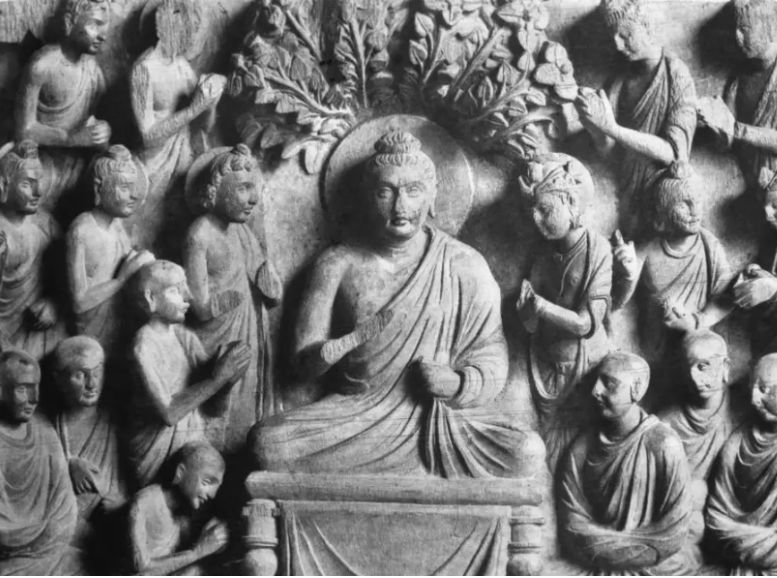
The Gaya Museum hums with the echoes of forgotten empires. Here, within its walls, a captivating collection of ancient sculptures whispers tales of dynasties past. Crafted from weathered stone and gleaming bronze, these artistic treasures span the Maurya, Gupta, and Pala eras, each piece a testament to the artistic spirit and cultural ethos of its time.
Terracotta Artifacts:
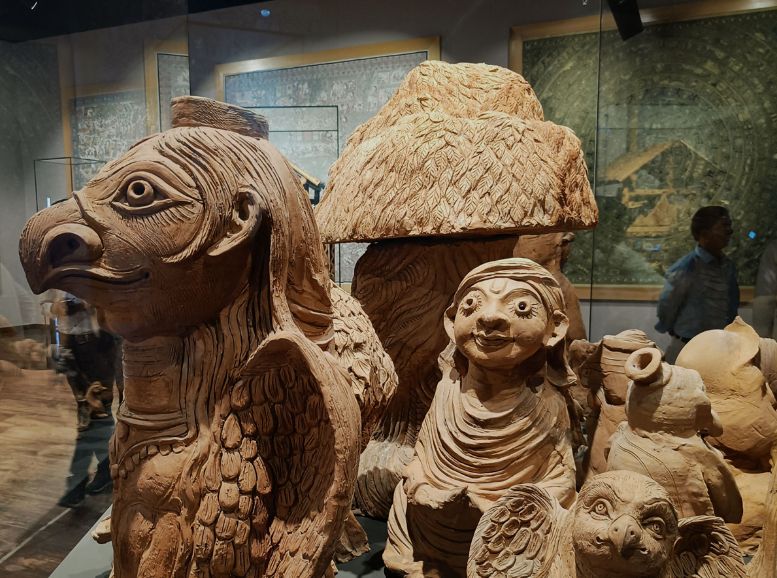
The Gaya Museum’s terracotta collection isn’t just a display of artifacts; it’s a time machine transporting you to ancient Bihar. Baked clay takes center stage, whispering stories through figurines, pottery, and decorative items.
These terracotta treasures span various periods. Figurines, the stars of the collection, depict not just humans and animals, but captivating mythological beings too. Look closer and you’ll see everyday activities like farming, cooking, and rituals come alive in intricate detail, offering a window into life centuries ago.
Manuscripts and Inscriptions:
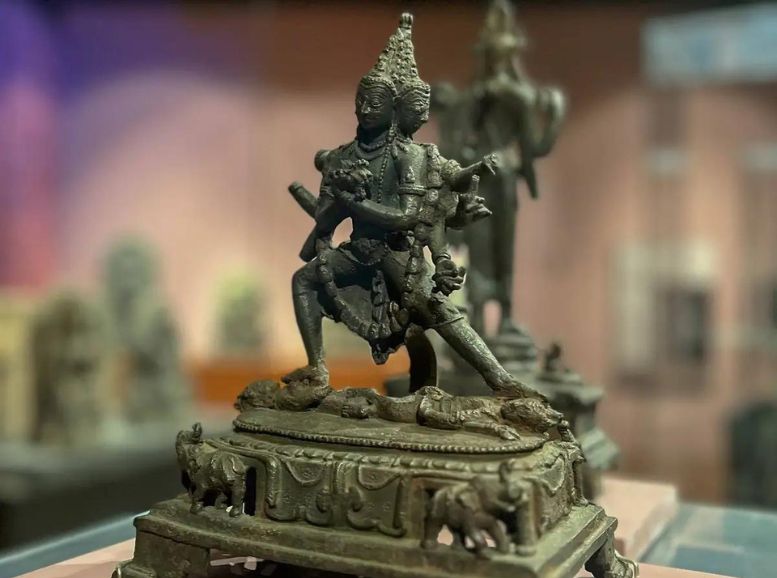
The Gaya Museum’s manuscript and inscription collection acts as a Rosetta Stone, unlocking the secrets of ancient Bihar’s intellectual and literary life. Palm leaves, once the common thread for sacred texts and scholarly works, whisper tales across millennia. These meticulously preserved artifacts, penned in ancient scripts like Brahmi and Devanagari, offer a glimpse into the writing practices and literary culture of a bygone era.
Beyond the manuscripts, stories are etched in stone. Inscriptions on tablets and pillars come alive, revealing details of historical events, royal decrees, and religious edicts. Each inscription is a fragment of a mosaic, helping us piece together the socio-political and religious landscape of the time.
Coins and Currency:
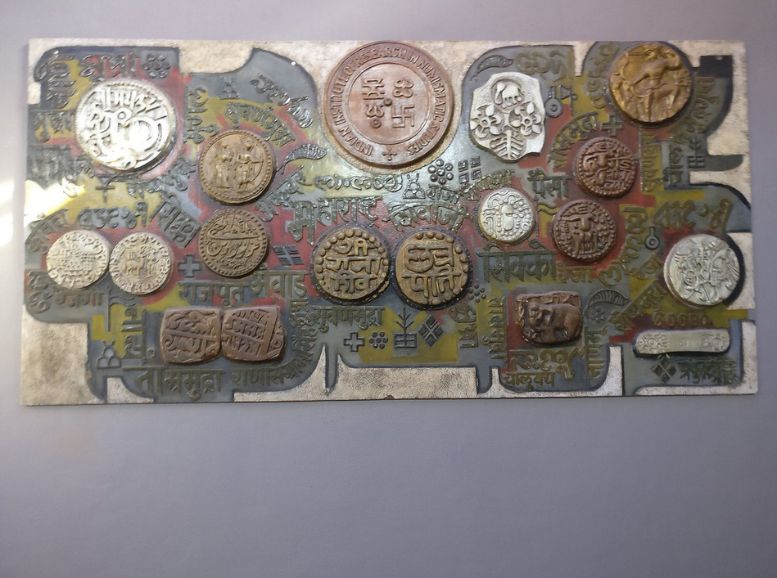
The Gaya Museum’s coin collection isn’t a mere display of metal; it’s a symphony of clinking history, each piece a note in the economic saga of Bihar. From the Mauryas to the Mughals, these coins whisper tales of empires past, reflecting the trade routes and commercial lifeblood of their eras.
Imagine a treasure chest overflowing with golden, silver, copper, and bronze discs, each a testament to a bygone dynasty. Their varied designs and inscriptions come alive under close inspection. You might glimpse a ruler’s portrait, a revered deity, or a symbolic motif, hinting at the artistic and cultural influences of the time.
Buddhist Artifacts:
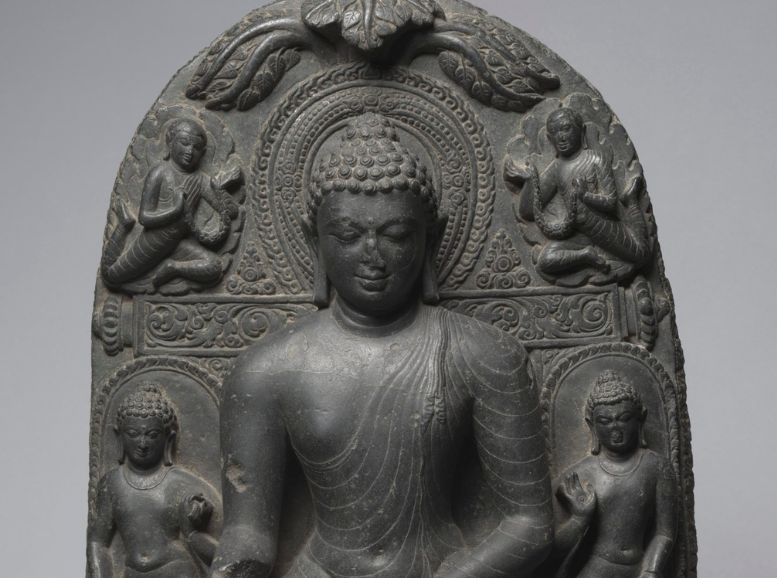
Unveiling the Buddhist soul of Gaya, the Gaya Museum’s collection transcends mere artifacts. It’s a vibrant tapestry woven with relics, statues, and ritual objects, each whispering tales of the region’s profound significance as a Buddhist pilgrimage and learning center. Statues of the Buddha and Bodhisattvas take center stage. Crafted from stone, bronze, and other materials, their serene expressions and intricate details speak volumes. They embody the artistic mastery and deep devotion of the artisans who breathed life into them.
Paintings and Mural Art:
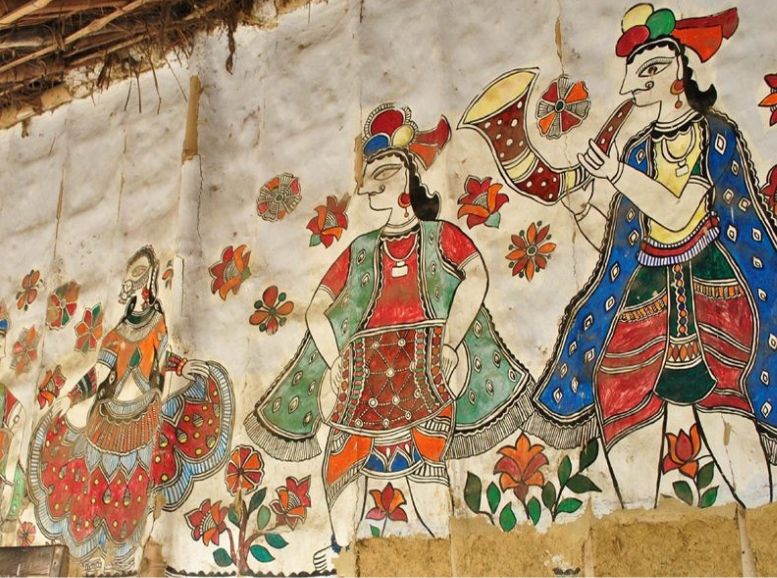
The Gaya Museum isn’t just a museum; it’s a kaleidoscope of Bihar’s artistic legacy. Paintings and murals explode across its walls, a vibrant timeline from ancient whispers to contemporary shouts. Among the stars are Mithila paintings, known as Madhubani art. Imagine intricate patterns and a symphony of colors depicting myths, local legends, or everyday life. Natural dyes and pigments, meticulously applied, breathe life into these works, connecting them to the very soil of Bihar.
The museum isn’t content with just the present; it’s a gateway to the past. Traditional Pattachitra paintings unfurl like vibrant tapestries, each a narrative scroll illustrating stories from Hindu mythology and folklore.
Local Experiences:
Mahabodhi Temple: A UNESCO World Heritage Site, this is where Buddha attained enlightenment. Explore its architectural beauty and spiritual significance, a short drive from the museum.
Pind Daan Rituals at Vishnupad Temple: Witness or participate in the Pind Daan rituals, a significant practice for Hindus performing ancestral rites in Gaya.
Seek Serenity under the Bodhi Tree: Spend time under the sacred Bodhi Tree, believed to be a descendant of the tree where Buddha meditated. Immerse yourself in the peaceful ambiance, perfect for reflection or meditation.
Immerse Yourself in Local Markets: Explore the vibrant markets of Gaya and Bodhgaya. Shop for traditional handicrafts, textiles, religious artifacts, and souvenirs, taking home a piece of Bihar’s rich culture.
Savor Local Delights: Don’t miss trying litti chokha, sattu paratha, and other delectable Bihari specialties at local restaurants and food stalls.
Gaya’s Artistic Heart: Uncover Gaya’s artistic spirit through its colorful murals and street art. These vibrant displays depict local culture, folklore, and historical themes.
A Step Back in Time: Visit nearby historical sites like the Barabar Caves, ancient rock-cut caves dating back to the Maurya Empire, and the Dungeshwari Cave Temples, where Buddha is believed to have meditated before enlightenment.
Cultural Extravaganza: Immerse yourself in local cultural performances and festivals, especially during major Hindu celebrations like Diwali and Chhath Puja. Experience the deep-rooted traditions and vibrant community spirit.
Explore on Two Wheels: Join a guided cycling tour around Bodhgaya and neighboring villages. This is a fantastic way to explore the rural landscapes, interact with locals, and experience the region’s natural beauty.
Travel tips:
- Local Transport: Auto-rickshaws, cycle-rickshaws, and taxis are readily available for convenient local travel. Negotiate fares beforehand to avoid confusion.
- Languages: Hindi and English are widely spoken. Learning a few basic Hindi phrases can be helpful and shows respect for the locals.
- Respectful Attire: When visiting religious sites like Mahabodhi Temple and Vishnupad Temple, dress modestly. Covering your shoulders and knees demonstrates respect for local customs.
- Comfortable Shoes: Prepare for walking! Comfortable shoes are essential for exploring the museum and historical sites. Remember to remove footwear when entering temples.
- Hydration is Key: Carry a water bottle, especially during hot weather. Avoid tap water; opt for bottled or filtered water.
- Respectful Behavior: Be mindful of local customs and traditions, particularly in religious places. Avoid photography where prohibited and maintain silence in meditation areas.
- Secure Belongings: Keep your belongings safe, especially in crowded areas. Consider using a money belt or a secure bag for valuables.
- Cash is King: Carry enough cash as smaller shops and vendors may not accept credit/debit cards. ATMs are available, but having cash is convenient.
Conclusion
Unveiling Bihar’s soul, a trip to Gaya and its surrounds is a captivating immersion into history and culture. The Gaya Museum whispers tales of the region’s past through its collection of ancient sculptures, terracotta artifacts, and insightful manuscripts. Delve deeper into these treasures and plan your itinerary at Xplro.com. But the adventure extends beyond the museum walls. Witness the spiritual significance of Mahabodhi Temple, participate in Pind Daan rituals, or savor the delectable flavors of Bihari cuisine. Remember to dress modestly at religious sites and consider cooler months for optimal comfort. Whether you’re drawn to the spiritual awakening of Bodhgaya or the artistic brilliance showcased in the museum, Gaya promises an unforgettable blend of history, spirituality, and cultural exploration. Let Xplro.com be your guide on this captivating journey.
FAQs
Where is Gaya Museum located?
- Gaya Museum is situated in Gaya city, Bihar, India, specifically on K.P. Road.
What are the opening hours of Gaya Museum?
- Typically, Gaya Museum is open from 10:00 AM to 5:00 PM, Tuesday through Sunday. It remains closed on Mondays and public holidays.
Is photography allowed inside Gaya Museum?
- Yes, photography is generally permitted inside the museum, but it’s advisable to ask museum staff for specific guidelines, especially for sensitive exhibits.
What are the admission charges for Gaya Museum?
- The admission fees are nominal, usually around INR 10-20 for Indian nationals and slightly higher for foreign tourists. Students and children often enjoy discounted rates or free entry.
In which languages are the exhibits labeled?
- Exhibits at Gaya Museum are primarily labeled in English and Hindi. Additional information in local languages or regional scripts may also be available.
Is Gaya Museum accessible for differently-abled visitors?
- Efforts have been made to make Gaya Museum accessible, but full accessibility for all disabilities may not be guaranteed. It’s recommended to inquire with the museum in advance.
Are guided tours available at Gaya Museum?
- Yes, guided tours can be arranged upon request. Local guides provide detailed insights into the exhibits and Bihar’s history, enhancing the visitor experience.
What other attractions are near Gaya Museum?
- Nearby attractions include Mahabodhi Temple in Bodhgaya, Vishnupad Temple in Gaya, Barabar Caves, and Dungeshwari Cave Temples, all significant for their historical and religious importance.
How far is Gaya Museum from Gaya Junction railway station?
- Gaya Museum is approximately 4 kilometers (about 2.5 miles) from Gaya Junction railway station. Auto-rickshaws and taxis are readily available for transportation.
What is the best time of year to visit Gaya Museum?
- The ideal time to visit is during the winter months, from October to February, when the weather is cool and pleasant, making it comfortable for exploring the museum and nearby attractions.
Can I visit Gaya Museum during festivals like Pitripaksha Mela?
- Yes, you can visit during festivals like Pitripaksha Mela, but be prepared for increased crowds. Planning ahead can help navigate the festival atmosphere.
Are there dining options near Gaya Museum?
- Yes, there are several dining options nearby, offering a range of local Bihari cuisine and other Indian dishes. Bodhgaya also caters to international tastes with various dining choices.





